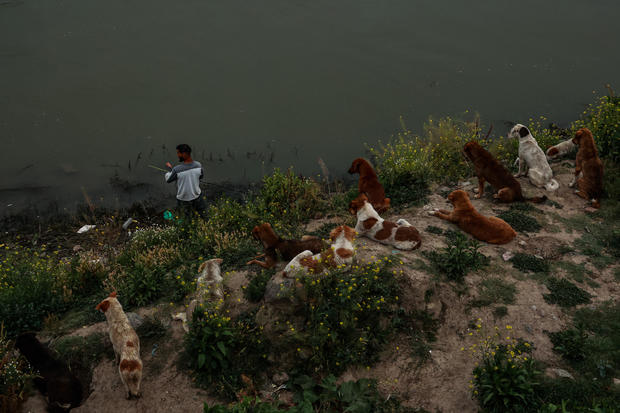
Painkiller used in cattle wiped out India’s vultures, and scientists say that led to 500,000 human deaths
New Delhi — Scientists say Indian farmers’ eager uptake of a painkiller for their cattle in the 1990s has led to the inadvertent deaths of half of a million people and massive economic losses — not from any harm to the cattle, but from the loss of millions of vultures, scavengers that historically devoured animals’ remains before they could rot and become vectors for disease.
In early 1990s, the patent on a painkiller called diclofenac lifted, making it cheap and widely available for India’s massive agricultural sector. Farmers use it to treat a wide array of conditions in cattle. But even a small amount of the drug is fatal to vultures. Since the beginning of its widespread use in India, the domestic vulture population has dropped from a whopping 50 million to just a few thousand — and according to a study published by the American Economic Association, the impact on humans has been monumental, reflecting the vital role the scavengers play.
Vultures have been a crucial part of India’s ecosystems for centuries. According to the authors of the study, entitled “The Social Costs of Keystone Species Collapse: Evidence From The Decline of Vultures in India,” the large, homely birds are a “keystone species” — one that plays an irreplaceable role in an ecosystem.
rabies in the world, as the feral dog population has grown dramatically,” Sudarshan told CBS News.
Nasir Kachroo/NurPhoto/Getty
Without a major vulture rebound, the study authors said the spread of disease and resulting deaths will only continue in the coming years, as will the costs associated with health care.
India did ban diclofenac for veterinary use in 2006, but Sudarshan said the ban needs to be enforced much more effectively. He and Eyal have called for more conservation funding to boost vulture populations, but they’ve warned that even if the Indian government does mount a major effort, it will take at least a decade for the species to bounce back to the extent required because they’re “slow reproducers.”
As an alternative to bringing the vultures back, Sudarshan said India could build a network of incinerators around the country, but the estimated cost of that is about $1 billion per year, and they would use a huge amount of energy and create considerable air pollution, which is already a major problem for India.
“So, it makes more sense to bring back the natural way of dealing with the millions of animal carcasses that India produces each year,” he said.
And he said that work must start urgently, as the “vultures began dying in the 1990s. India has not done anything three decades on.”
Faisal Khan/Anadolu Agency/Getty
The government does spend about $3 million per year to save India’s native tigers. Sudarshan said while vultures may be far less of a tourist attraction, there’s a broader question about “the basis of our conservation policy.”
“Our paper shows that the cost of losing them [vultures] is about $69 billion a year, which is far higher than any benefits the tiger” brings, he said, adding: “We need to think from a cost effectiveness point of view and growth view, how should we pick species to conserve?”
“Understanding the role vultures play in human health underscores the importance of protecting wildlife – and not just the cute and cuddly,” said his co-author, Frank. “They all have a job to do in our ecosystems that impacts our lives.”
Source: cbsnews.com
